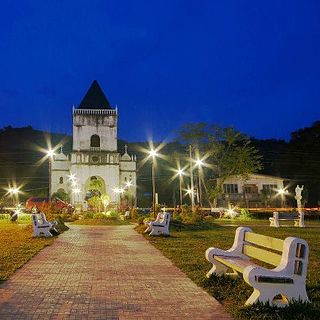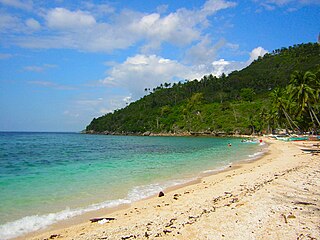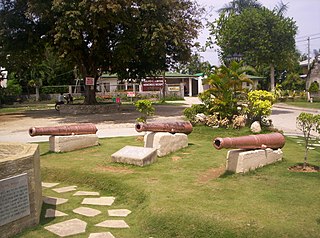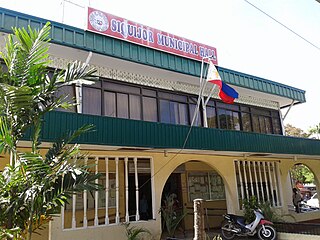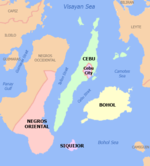Bogo | |
|---|---|
| City of Bogo | |
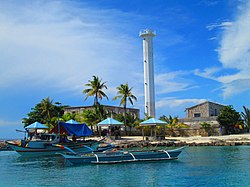 Capitancillo Island | |
| Anthem: Bogo Hymn | |
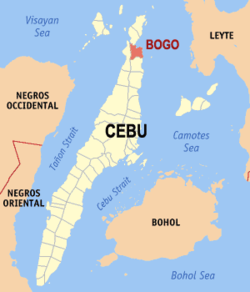 Map of Cebu with Bogo highlighted | |
Location within the Philippines | |
| Coordinates: 11°01′N124°00′E / 11.02°N 124°E | |
| Country | Philippines |
| Region | Central Visayas |
| Province | Cebu |
| District | 4th district |
| Founded | 1850 |
| Cityhood | June 16, 2007 (Lost cityhood in 2008 and 2010) |
| Affirmed Cityhood | February 15, 2011 |
| Barangays | 29 (see Barangays) |
| Government | |
| • Type | Sangguniang Panlungsod |
| • Mayor | Carlo Jose A. Martinez (1Cebu) |
| • Vice Mayor | Maria Cielo A. Martinez (1Cebu) |
| • Representative | Janice Z. Salimbangon |
| • City Council | Members |
| • Electorate | 56,633 voters (2022) |
| Area | |
• Total | 103.52 km2 (39.97 sq mi) |
| Elevation | 18 m (59 ft) |
| Highest elevation | 292 m (958 ft) |
| Lowest elevation | 0 m (0 ft) |
| Population (2020 census) [3] | |
• Total | 88,867 |
| • Density | 860/km2 (2,200/sq mi) |
| • Households | 23,260 |
| Economy | |
| • Income class | 6th city income class |
| • Poverty incidence | 27.60 |
| • Revenue | ₱ 641.2 million (2020) |
| • Assets | ₱ 1,563 million (2020) |
| • Expenditure | ₱ 563.2 million (2020) |
| • Liabilities | ₱ 259.2 million (2020) |
| Service provider | |
| • Electricity | Cebu 2 Electric Cooperative (CEBECO 2) |
| Time zone | UTC+8 (PST) |
| ZIP code | 6010 |
| PSGC | |
| IDD : area code | +63 (0)32 |
| Native languages | Cebuano Tagalog |
| Website | www |
Bogo, officially the City of Bogo (Cebuano : Dakbayan sa Bogo; Hiligaynon : Dakbanwa sang Bogo; Filipino : Lungsod ng Bogo), is a component city in the province of Cebu, Philippines. According to the 2020 census, it has a population of 88,867 people. [3]
Contents
- Government center
- Cityhood
- Geography
- Barangays
- Climate
- Demographics
- Economy
- Culture
- Fiestas and festivals
- Education
- Elementary schools
- High schools
- Private schools
- Media
- Tourism
- Economy and Infrastructures
- Notable personalities
- City hymn
- Notes
- References
- Sources
- External links
The plebiscite for the cityhood of Bogo was held on June 16, 2007, in which 97.82% of voters of Bogo voted for cityhood. Former representative Clavel Asas-Martinez announced that the cityhood of Bogo has been ratified. It became the sixth component city of Cebu province. [5]








